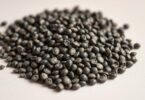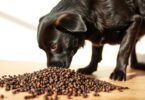More than 65 percent of pet owners have administered their furry friends with herbs such as mint to help freshen breath without using chemicals. However, when it comes to sharing garden plants with four-legged friends, the safety issue is the first question to come to mind. The popularity of mint in human food and pet products makes it a typical interest and worry to those who value animal health.
This is an aromatic family of plants that has dozens of varieties, including peppermint and spearmint. Although small quantities of fresh leaves can hardly cause any harm to healthy pets, excessive consumption can cause stomach upset. Some varieties such as pennyroyal have compounds that are poisonous to animals and should not be given.
To learn about the safe mint plants, it is necessary to know their peculiarities. This guide discusses nutritional values, serving size, and the dangers lurking in flavored commercial snacks. The readers will be taught to differentiate between harmless and dangerous choices and find useful hints on safe usage.
Understanding Mint Varieties and Their Effects on Dogs
Not every mint plant is equally safe to pets. Although a few species have mild benefits, others are dangerous. It is important to learn how to distinguish between the common garden varieties to keep furry members of the family healthy.
Peppermint vs. Spearmint: What's Safe for Your Dog?
Peppermint and spearmint are one of the safest to pets. Such varieties have lesser amounts of essential oils than the wild counterparts. Fresh leaves of either plant can be used to alleviate occasional stomach pains when used in moderation.
Spearmint’s milder flavor makes it preferable for canine consumption. Both of them contain trace antioxidants that do not overload the digestive system of a pet. Always introduce small amounts to monitor individual tolerance.
Identifying Toxic Varieties: The Case of Pennyroyal
Pennyroyal (Mentha pulegium) stands out as particularly dangerous. The invasive species has pulegone, a substance that causes liver injury in animals. Even a small consumption may cause vomiting, diarrhea, or neurological problems.
Gardeners ought to be taught to identify the low-growing nature of pennyroyal and its purple-colored flowers. When in doubt, consult a horticulturist before planting. Safer substitutes such as spearmint are a calmer alternative that does not compromise greenery.
Nutritional Insights and Benefits of Mint for Dogs
Although mint is not a staple food, its leaves contain certain nutrients that may be beneficial to the health of a dog. New types have vitamin A to take care of vision, manganese to build bones, and iron to transport oxygen. These herbs also contain antioxidants that fight the free radicals associated with aging.
Key Nutrients in Fresh Mint Leaves
Every sprig offers trace amounts of essential minerals. Vitamin A helps maintain healthy skin and coats and manganese helps enzyme activity. Iron helps to maintain healthy blood cells and antioxidants such as rosmarinic acid protect the cells.
Potential Health Advantages of Mint in Moderation
A few pieces can calm a mild stomach ache or freshen the breath. Limited studies suggest anti-inflammatory properties could benefit joints. However, these effects are subtle and vary between pets.
Fresh mint leaves are low in calories and should not be used to substitute balanced meals. High-quality dog food should always be the first source of nutrition. Consult a vet before introducing herbal supplements regularly.
Safe Serving Guidelines for Mint Leaves
The establishment of suitable amounts will make pets receive benefits without negative consequences. Even non-poisonous plants should be taken in the right dose to prevent gastrointestinal discomfort. Begin with small amounts and monitor responses before minting a habit.
Recommended Portions and Frequency
According to the majority of veterinarians, average-sized pets should be given no more than 1-2 leaves of fresh mint per day. Small breeds might be able to take half a leaf and larger animals two. Serve in portions over several days instead of serving daily to avoid cumulative effects.
Excessive consumption may result in vomiting or diarrhea because of the irritation of essential oils to the stomach lining. Dried leaves have more of these oils and fresh ones are safer. Never use mint as a snack but always combine it with safe herbs to pets.
Consider existing dietary habits when introducing new items. Animals that consume special diets can respond to plant additives. Ask your vet to verify proper doses depending on weight, age, and health history.
Prioritize safety by washing leaves thoroughly and removing stems. Frozen mint cubes are a refreshing summer alternative but they still follow the same quantity rules. Just keep in mind: controlled experimentation is better than careless indulgence in the case of natural supplements.
Risks of Mint-Based Treats and Processed Mint Products
Mint products found in stores are usually concealing hazards that fresh leaves do not. Additives that are toxic to pets are often found in human-grade sauces, candies, and flavored snacks. Even those products that are advertised as natural might contain the ingredients that cause serious health problems.
Dangers of Mint Sauces, Sweets, and Essential Oils
Chocolate mints and mint ice cream are some of the most dangerous sweets. These usually contain a high amount of sugar and contain poisonous ingredients such as xylitol, which causes liver failure in animals (artificial sweetener). A 2022 veterinary study established that 1.5 grams of xylitol per kilogram of body weight may result in life-threatening hypoglycemia.
Another danger is essential oils in breath fresheners or cleaning products. When taken, their concentrated formulas can result in vomiting, diarrhea, or neurological symptoms. Pennyroyal oil, which is occasionally used in natural insect repellents, has substances that destroy red blood cells.
Safer alternatives include homemade frozen treats using pet-safe herbs. Never forget to read the ingredients, as there might be hidden sugars, oils or chocolate, even in small quantities, they are dangerous to furry friends. In case of doubt, it is advisable to seek the opinion of a veterinarian prior to giving any human food that has mint flavoring.
Can dogs eat mint leaves: Proper Use in Homemade Treats
Homemade snacks provide an opportunity to be creative and use fresh herbs and retain control of ingredients. Mint also needs to be used in moderation to find a balance between taste and safety. These recipes are simple and do not use additives that are present in commercial products.
DIY Dog-Friendly Mint Treat Ideas
Start with basic recipes like frozen yogurt bites. Combine plain Greek yogurt with finely chopped spearmint leaves (1-2 per cup), pour into the ice cube trays. To make crunchy biscuits, mix oat flour, unsweetened applesauce and a pinch of dried mint- bake at 350 0 F until golden.
Never use concentrated oils, but fresh or air-dried leaves. A veterinary nutrition study conducted in 2023 discovered that 93 percent of pets could handle small doses of fresh mint more than processed mint. Mix these snacks with other non-toxic herbs to give variety without disturbing sensitive stomachs.
Monitoring Your Pet’s Reaction to Mint
Observe behavior and digestion 24 hours after new snacks were added. Watch out to see symptoms such as excessive scratching, loose stools or energy levels. Most animals are not affected adversely, although individual sensitivities occur.
With pets that are not used to the taste of herbs, rub one leaf on their favorite toy to start with. This is a progressive exposure that allows the determination of preferences prior to full recipes. In case of concerns, parsley or coconut flakes can be used as alternative breath-fresheners.
Remember: even natural ingredients require careful portion control. Record the frequency of track treats in a journal and talk to your veterinarian about any unusual reactions right away. Responsible experimentation ensures pets enjoy novel flavors safely.
Considerations for Various Mint Forms and Added Ingredients
Most commercially available mint products have additives that are highly dangerous to the health of canines. Although fresh leaves may not appear to be harmful, the processed ones usually contain ingredients that are poisonous to pets. Being aware of these differences will enable families to make safer decisions regarding their furry members.
Impact of Sugar, Xylitol, and Other Additives
The natural mint leaves are quite different compared to the flavored treats that are meant to be consumed by human beings. The processed products such as breath mints or baked goods usually have sugar that leads to obesity and teeth problems in pets. An animal report published in 2022 discovered that 78 percent of mint-flavored human snacks had xylitol-a sweetener that causes liver failure in dogs.
Xylitol’s toxicity requires special attention. Even the slightest doses can cause dangerous blood sugar drops. Veterinarians highly recommend reading labels of this additive, particularly in so-called sugar-free products that are sold to health-conscious families.
Accurate identification matters beyond plant species. Artificial flavorings in some mint-flavored dog food or dental chews are based on unrelated plant families. New items should always be introduced with consultation with your vet, especially in case your pet has any pre-existing health conditions.
Among the main recommendations, it is possible to avoid human-grade mint snacks and choose vet-recommended brands. Look at products that contain few ingredients, and keep in mind, what is safe to humans is usually dangerous to four-legged family members.
Wrapping Up Dog-Friendly Mint Practices
One of the responsibilities of pet ownership is to know the plants that are beneficial to the health of animals. Spearmint and peppermint are safe to use in small amounts, but pennyroyal and other species like it should not be in gardens. To prevent the risk of hidden dangers, always use natural leaves and not processed products.
Use 1-2 fresh leaves per serving of average-sized pets, and adjust the amount depending on weight. Homemade snacks such as frozen yogurt cubes with herbs chopped can be safer alternatives to store bought mints or ice creams with flavors. Avoid anything with xylitol, artificial sweeteners or concentrated oils which are typical in human snacks.
Before you add herbs to meals, consult your veterinarian, particularly in pets with dietary restrictions. A balanced diet is also vital, and the mint leaves are only used as breath fresheners and not as a staple. Always wash leaves thoroughly and monitor reactions after introduction.
By using fresh sources and vet-approved sources, families can safely incorporate the use of this aromatic plant into their pet care routine without additives. With careful usage, it is a welcome change to the treat rotation of your furry friend.
FAQ
Are certain mint species harmful to pets?
Pennyroyal (Mentha pulegium) has toxic constituents that can result in liver failure or neurological problems in dogs. Whenever you want to give mint plants to your pet, ensure you check the varieties.
Can mint improve a dog’s digestive health?
Fresh spearmint or peppermint in small amounts may help to relieve mild stomach cramps, although too much of it can cause vomiting. Consult a veterinarian before using herbs for therapeutic purposes.
How much fresh mint is safe for dogs?
Medium sized dogs are normally advised to take 1-2 washed leaves per week by the veterinarians. Portion according to the weight of your pet and watch out on side effects such as diarrhea.
Why are commercial mint products risky?
Most candies, gums, and baked products have xylitol, sugar, or artificial sweeteners that are harmful to pets. Mint-flavored products also can cause respiratory distress due to essential oils.










Leave a Comment